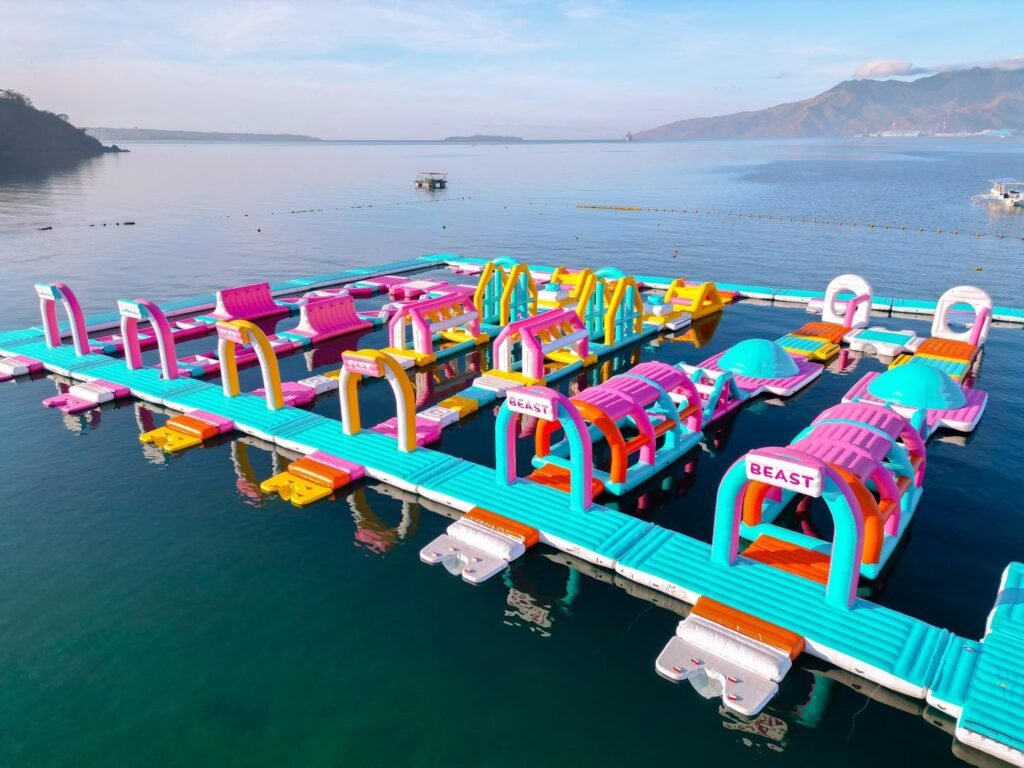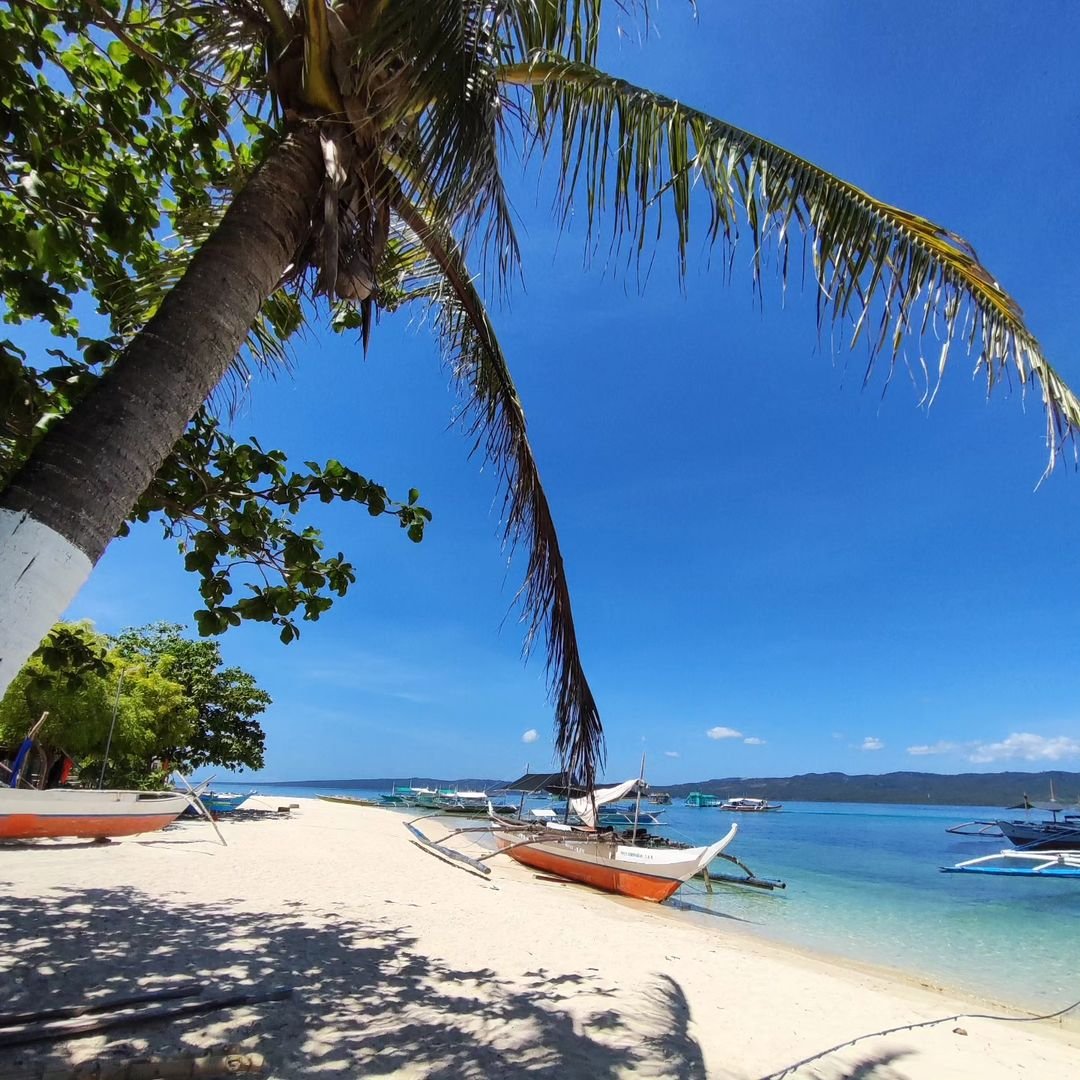
Introduction to Alibijaban Island
Nestled off the coast of San Andres, Quezon, Alibijaban Island is a hidden tropical paradise that attracts nature lovers, beachgoers, and adventure seekers alike. Known for its pristine waters, lush mangrove forests, and scenic white-sand beaches, Alibijaban Island Quezon offers an escape from the busy city life of Manila. This unspoiled gem is often included on travelers’ bucket lists due to its rich biodiversity and peaceful atmosphere, making it a sought-after destination in the Philippines.
One of the highlights of Alibijaban Island San Andres Quezon is its crystal-clear waters, perfect for swimming, snorkeling, and observing the vibrant marine life. Travelers who venture to this serene spot will find a range of experiences waiting for them, from its unique floating cottages to rustic beach resorts that provide a relaxing stay. For those planning a trip, the island’s accessibility is a plus, with straightforward travel routes from Manila to Alibijaban Island, via San Andres Port to Alibijaban Island by boat. This makes it easy for tourists to reach and explore the natural beauty and tranquility of the island.
In addition to its stunning landscapes, Alibijaban Island has developed a reputation for affordable travel options, drawing both solo travelers and families who appreciate the island’s beach resort rates and variety of tour packages. Whether you’re looking to create a DIY Alibijaban Island itinerary or book a complete Alibijaban Island tour package, this tropical haven offers diverse options for a memorable experience. As a lesser-known destination, Alibijaban Island remains relatively untouched by mass tourism, preserving its authentic charm. For anyone looking to discover a new tropical destination with natural allure and rich history, Alibijaban Island Quezon is a must-visit destination in the Philippines.
Table of Contents
Where is Alibijaban Island?
Alibijaban Island is a secluded island located off the southeastern coast of the Bondoc Peninsula in Luzon, within the municipality of San Andres, Quezon, Philippines. Positioned approximately 330 kilometers from Manila, the island is reachable via the Pan-Philippine Highway and Bondoc Peninsula Road, leading to San Andres Port. From there, visitors can take a motorized boat to reach Alibijaban Island, a journey of roughly 30-45 minutes. The island’s relatively remote location makes it a quiet getaway, ideal for visitors seeking a serene escape.
Alibijaban Island is especially renowned for its natural beauty, including its vast mangrove forests and white sand beaches, which stretch along its coastline. These mangroves are ecologically significant, housing diverse flora and fauna, including several bird species. The nearby waters also support rich marine biodiversity, including coral reefs frequented by whale sharks and sea turtles, making the area a conservation priority.
If you’re planning to visit, a map of Alibijaban Island or GPS navigation to San Andres, Quezon will be helpful, as the island is relatively isolated. It sits close to other destinations like Burias Island, providing additional opportunities for island-hopping adventures.
Alibijaban Island Map
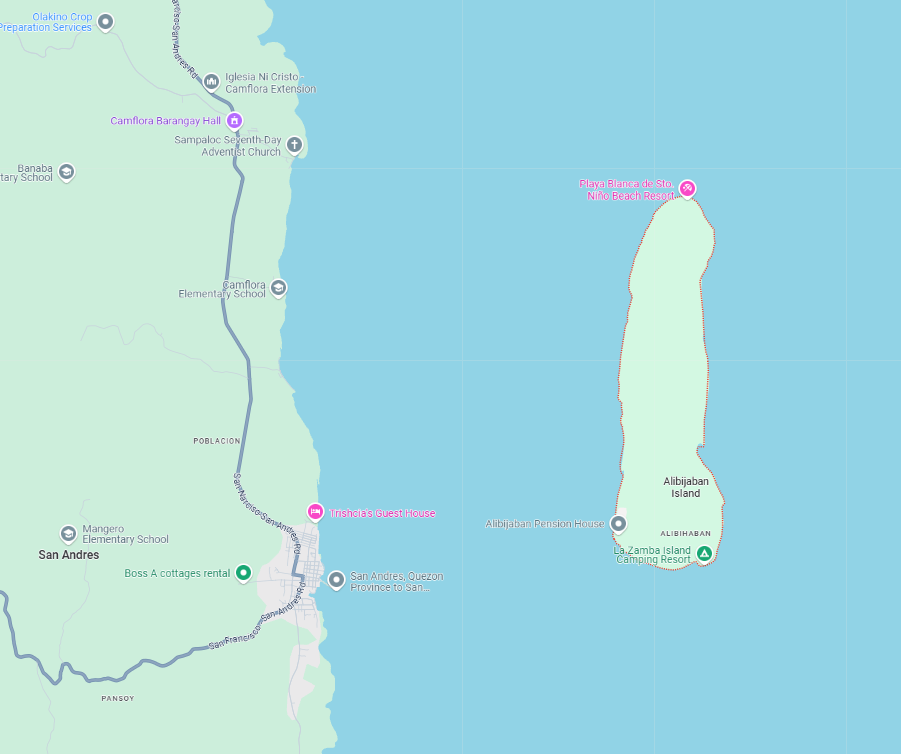
How to Go to Alibijaban Island from Manila
To travel from Manila to Alibijaban Island, follow this detailed guide to ensure a smooth journey:
Manila to Lucena City: Start by boarding a bus to Lucena Grand Terminal from major hubs in Manila, such as Cubao, Buendia, or Alabang. The fare typically ranges from PHP 280–300, and the trip lasts about four hours. Make sure to check bus schedules, as early morning or late-night trips may have more availability.
Lucena to San Andres, Quezon: Once in Lucena Grand Terminal, transfer to a bus or van bound for San Andres, Quezon. This leg takes about three to four hours, with fares between PHP 250–300. Buses might have limited schedules, so consider taking a van for more convenience and possibly shorter travel times.
San Andres Port to Alibijaban Island: From San Andres, take a short tricycle or walk to San Andres Port, where you can arrange a boat to Alibijaban Island. Public boats charge around PHP 50–75 per person, and a private boat can be chartered for approximately PHP 1,500 for groups of up to 10 people. The boat ride from San Andres Port to Alibijaban Island takes about 30–45 minutes.
For ease, private van rentals are also available from Manila directly to San Andres, Quezon, particularly for group travel. Another option is to book an Alibijaban Island tour package, which often includes round-trip transportation, boat transfers, and basic accommodation options
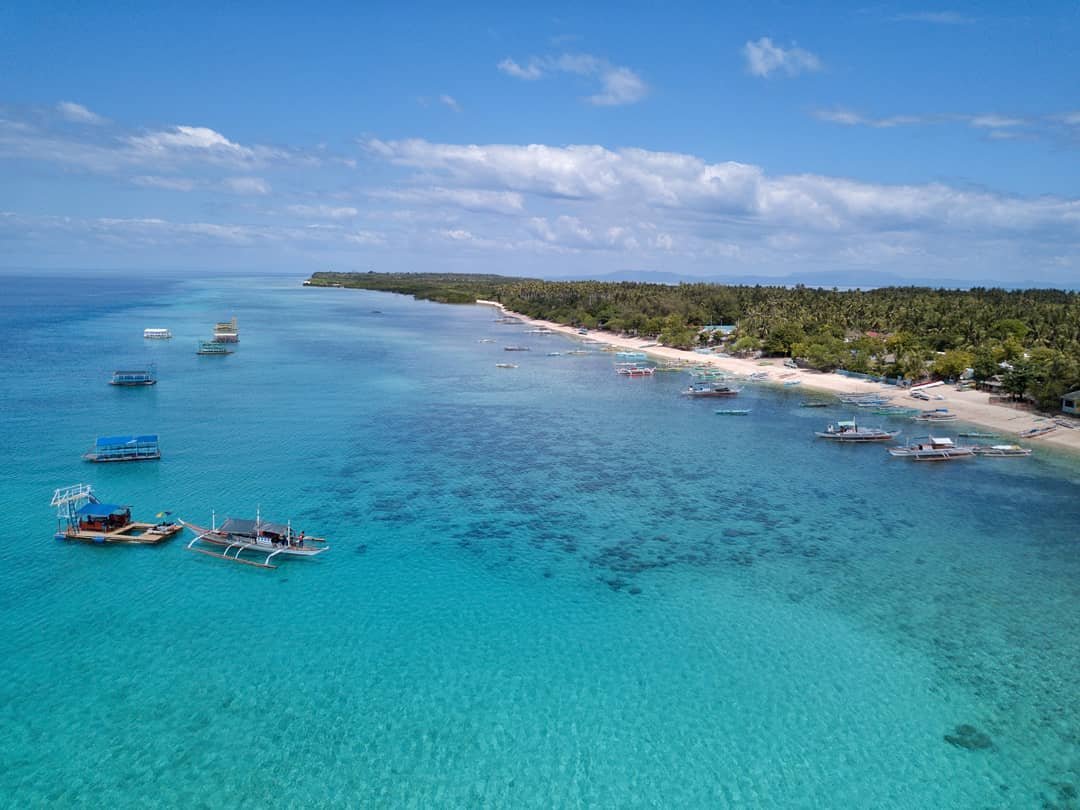
Best Time to Visit Alibijaban Island
The best time to visit Alibijaban Island is during the dry season, which typically runs from November to May. This period offers favorable weather with sunny, dry days perfect for exploring the island’s highlights, such as its white sand beaches, extensive mangrove forests, and the stunning sandbar that is best viewed during low tide.
Visiting during these months also means fewer interruptions to island activities like snorkeling, swimming, and sightseeing due to clear skies and calm seas. Peak tourist times often fall in the summer months, especially around local holidays, so planning a visit during weekdays or early in the dry season may provide a more secluded experience.
The monsoon season, from June to October, brings heavier rains and potential typhoons, which can limit outdoor activities and access to nearby attractions like the floating cottages and sandbars. However, those who don’t mind occasional rain might enjoy fewer crowds and cooler temperatures during this off-peak season.
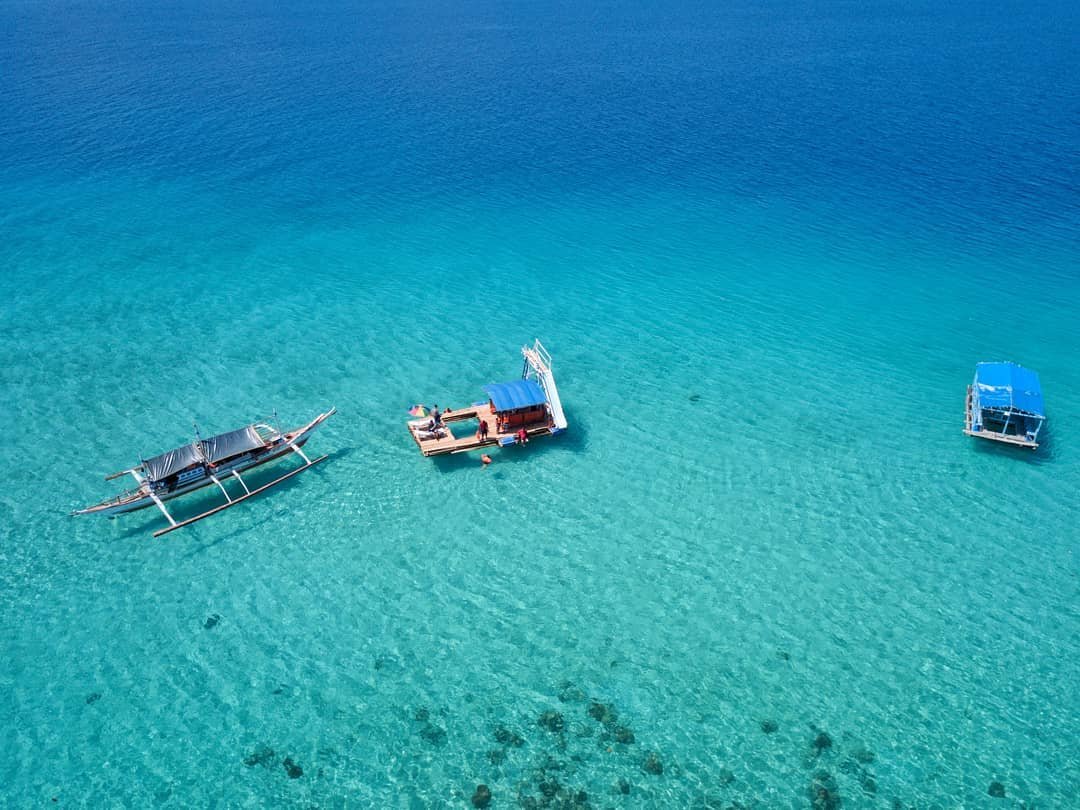
Where to Stay in Alibijaban Island
Alibijaban Island offers a variety of accommodation options, primarily geared towards budget and eco-friendly travelers. Most places on the island are rustic, with basic amenities, allowing visitors to immerse themselves in the island’s natural beauty without modern frills. Here are some options to consider:
Tent Camping: Tent rentals are available for around PHP 300 per night, allowing travelers to camp along the beach under the stars. Many visitors enjoy this option for its affordability and the chance to experience the island’s serene ambiance by the sea.
Cottages and Kubos: For a bit more privacy and comfort, you can rent traditional Filipino-style cottages or “kubos” near the beach. Rates generally range from PHP 500–1000, depending on the size and facilities offered. These are ideal for couples or small groups wanting a more comfortable stay while keeping close to nature.
Transient Houses: For larger groups, transient houses provide a budget-friendly solution with basic amenities. These are often shared spaces and come equipped with bedding and fans. Arrangements can be made through local tourism offices or by contacting local hosts directly.
Booking Alibijaban Island Tour Packages
Tour packages, often priced around PHP 1,500-3,000, include transportation, boat rides, and sometimes accommodation. These packages are convenient for those looking to simplify travel logistics, covering transportation from Manila to San Andres and boat transfers to the island.
These accommodation options make it easy for budget travelers and nature enthusiasts to enjoy Alibijaban Island’s beauty with minimal environmental impact.
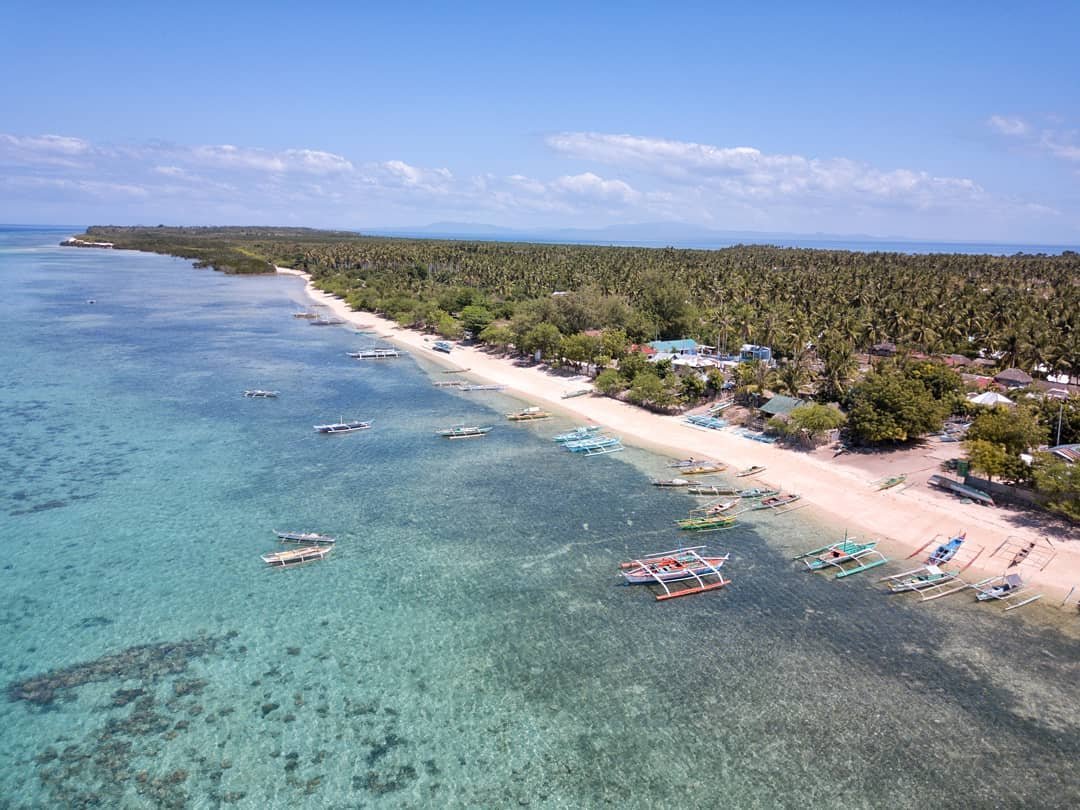
Alibijaban Island Entrance Fee and Tour Packages
Visiting Alibijaban Island requires an entrance fee of PHP 100 per person, which supports local tourism and conservation efforts. Additionally, a small environmental fee (around PHP 10) is collected at San Andres Port before boarding the boat to the island. Once on the island, visitors can enjoy Alibijaban’s sandbars, mangrove forests, and marine life.
Available Alibijaban Island Tour Packages
There are various Alibijaban Island tour packages that cater to different budgets and preferences, often including transportation, island-hopping activities, and accommodation options. Here are some popular options:
2D1N Joiner Tours: Many tour agencies offer budget-friendly 2-day, 1-night packages for around PHP 2,999 per person. These packages typically include round-trip van transfers from Manila to San Andres, boat transfers to Alibijaban, entrance fees, tent accommodations, and basic island activities like snorkeling and beach time.
Private Group Tours: Private packages range from PHP 8,000 to PHP 12,000 depending on group size. These often include more flexible itineraries and additional stops at nearby Burias Islands, like Sombrero or Animasola Islands, for a more customized experience.
Island-Hopping Options: Many packages include island-hopping tours to nearby spots in Burias, with additional entrance fees at each island. This option lets visitors explore diverse landscapes, such as the rock formations on Animasola and the serene beaches of Tinalisayan and Sombrero.
These tour packages provide a convenient way to enjoy the island’s highlights, from the floating cottages and mangroves to the pristine beaches, with local guides available to enhance the experience.
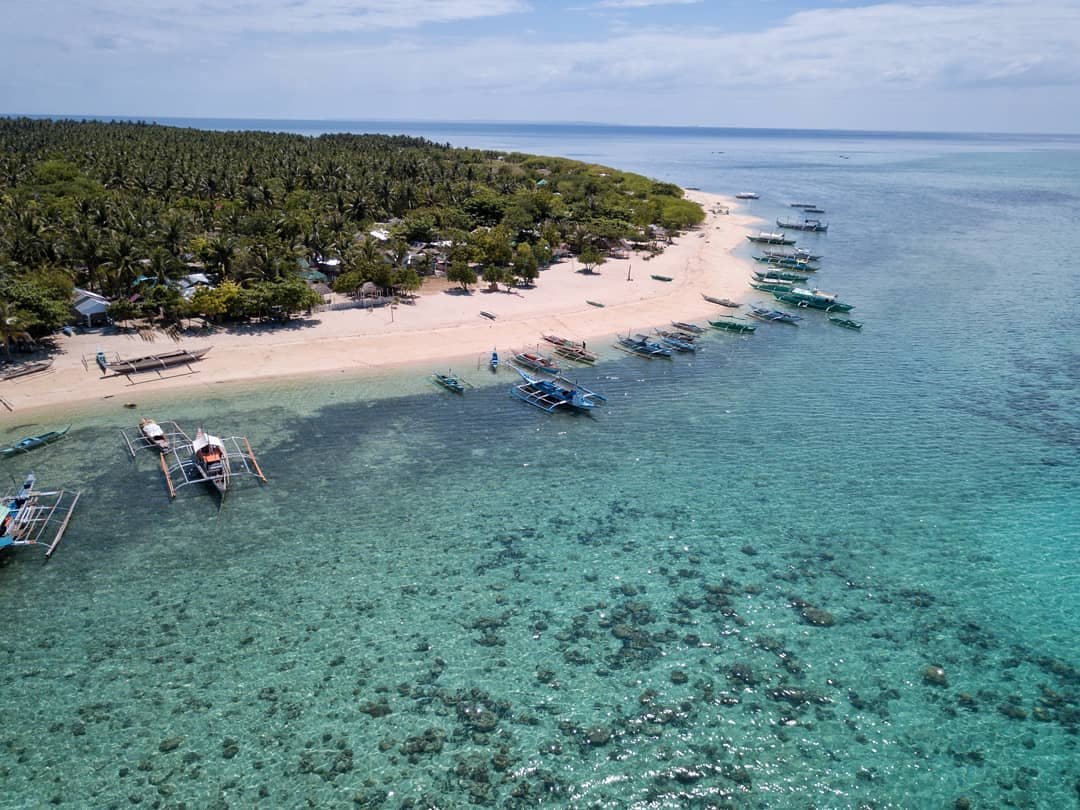
Things to Do in Alibijaban Island
Alibijaban Island in Quezon offers a range of activities that highlight its natural beauty, serene beaches, and unique ecosystem. Here are some popular activities and tips for crafting a DIY Alibijaban Island itinerary:
Snorkeling and Swimming: The clear, turquoise waters around Alibijaban Island are perfect for snorkeling, allowing you to explore diverse marine life and coral reefs. The waters near the sandbars and mangroves are generally calm, making them ideal for swimming and enjoying the coastal scenery without heavy currents.
Relaxing at the Floating Cottage: One of Alibijaban’s unique attractions is its floating cottages, which you can rent for around PHP 200 per hour. These cottages allow you to enjoy meals on the water, relax, and even slide directly into the sea. Floating cottages are particularly popular for groups who want a laid-back experience with easy access to swimming and snorkeling spots around the cottage.
Exploring the Mangrove Forest: Alibijaban boasts a large mangrove forest that covers significant parts of the island. This area is both ecologically important and visually stunning, offering shaded pathways and natural tunnels formed by mangrove branches. Guided mangrove tours are often available, highlighting the forest’s role in local conservation and its impact on the island’s ecosystem.
DIY Island Hopping Itinerary: Many visitors to Alibijaban combine their trip with an island-hopping adventure to the nearby Burias Islands, which includes stops at Sombrero, Tinalisayan, and Animasola Islands. These islands feature unique rock formations, pristine beaches, and shallow waters ideal for snorkeling. This option requires arranging a private boat, typically around PHP 3,000–9,000, depending on the number of stops and group size.
Camping and Beachcombing: For a full immersion in nature, camping is a popular overnight activity. Beachcombing along Alibijaban’s white sands provides a peaceful escape with views of sunrise and sunset over the water. Tents are available for rent, or you can bring your own camping gear for a DIY experience.
These activities make Alibijaban Island a versatile destination for both relaxation and adventure, with eco-friendly options for travelers seeking a more sustainable experience.

Alibijaban Island Itinerary and Budget
re’s a sample Alibijaban Island itinerary and a budget breakdown for a 2-day, 1-night weekend trip. This plan provides details on transportation, activities, and tips for keeping costs low:
Sample Itinerary
Day 0 (Friday Evening)
- 10:00 PM: Depart Manila via bus to Lucena (PHP 280–300), then transfer to San Andres, Quezon.
Day 1 (Saturday)
- 6:00 AM: Arrive in San Andres and have breakfast (around PHP 100) at a local eatery.
- 8:00 AM: Boat ride to Alibijaban Island (PHP 50–75 for public boat or PHP 1,500 for a private group).
- 9:00 AM: Arrival at Alibijaban; explore the beach and mangrove forest, followed by snorkeling (PHP 100 for entrance).
- 12:00 PM: Lunch at a floating cottage (PHP 200 per hour rental).
- Afternoon: Continue island activities like relaxing on the sandbars, taking photos, or visiting nearby spots by boat.
- 6:00 PM: Set up camp on the beach (tent rental PHP 200) and enjoy a beachfront dinner (bring ready-to-cook food for cost-saving).
Day 2 (Sunday)
- 6:00 AM: Morning beach walk or final swim.
- 8:00 AM: Pack up and return to San Andres by boat.
- 12:00 PM: Lunch in San Andres (PHP 100) and travel back to Manila.
Budget Estimate
- Transportation (Manila to San Andres): PHP 580–700 round-trip by bus.
- Boat to Alibijaban Island: PHP 50–75 per person one-way (or PHP 1,500 for a group of 10).
- Entrance and Environmental Fees: PHP 110 (island entrance and environmental fee).
- Accommodation: Tent rental at PHP 200 per night or budget huts starting from PHP 500.
- Meals: Approx. PHP 400–500 (bring packed food or buy fresh seafood from locals).
- Activities (Floating Cottage Rental): PHP 200 per hour, optional snorkeling.
Tips for Budgeting
- Meal Options: Bring marinated food, canned goods, or buy from San Andres before boarding. Cooking on the island saves on meal costs.
- Share Group Expenses: Travel in a group to share the costs of boat rentals and accommodations, especially for island hopping.
- Essentials: Bring reef shoes, sunscreen, and insect repellent to avoid extra costs on the island.
This itinerary is flexible but designed to balance relaxation and adventure while keeping within a budget of around PHP 2,500–3,000 per person for a weekend trip

Alibijaban Island History
Alibijaban Island has a rich history intertwined with its geographical significance and traditional lifestyle, rooted in the small community of San Andres, Quezon. Located off the southeastern coast of the Bondoc Peninsula, the island has long been a modest settlement that relied on fishing and local resources, which continues to support its economy today. Initially, its residents were attracted by the abundance of natural resources and the strategic positioning, ideal for a quiet life and sustainable subsistence. Historical accounts suggest that the island was settled before significant influxes of people from nearby provinces, making it an early and self-sufficient community.
In recent years, eco-tourism has brought new life and challenges to Alibijaban. The island is famous for its extensive mangrove forests and white sand beaches, attracting visitors and generating income for locals. However, these developments directly impact the small population, requiring careful management to balance tourism growth with conservation efforts to protect the ecosystem.
Today, Alibijaban’s charm lies in its untouched, simple way of life, offering visitors a glimpse into traditional Filipino island culture while emphasizing the importance of environmental preservation.
Commonly Asked Questions (FAQs) about Alibijaban Island
What is the best way to reach Alibijaban Island from Manila?
Travelers typically take a bus from Manila to Lucena City, transfer to a van or bus to San Andres, and then board a boat at San Andres Port to reach the island. This route usually takes around 6-8 hours, depending on traffic and waiting times at each transfer point.What activities can visitors enjoy on Alibijaban Island?
Alibijaban offers activities like snorkeling, swimming in clear waters, and relaxing on its sandbars. The island’s floating cottages and vast mangrove forests are also popular, offering unique opportunities to experience the island’s natural beauty and marine life.Are there any entrance or environmental fees?
Yes, visitors pay an entrance fee of PHP 100 per person and a small environmental fee at San Andres Port before boarding the boat. These fees help support conservation efforts on the island.What accommodation options are available?
Accommodation on Alibijaban is simple, with options such as tents, traditional “kubo” cottages, and homestays hosted by local families. Camping is popular, especially for those looking for a rustic experience.What should travelers bring?
Essentials include sun protection, insect repellent, snorkeling gear, and food supplies. If camping, it’s advisable to bring a tent, although some rentals are available. Local guides suggest bringing reef shoes to protect against sea urchins commonly found near the shoreline.Are there tour packages that include Alibijaban Island?
Yes, some packages cover Alibijaban and nearby Burias Islands for island-hopping tours. These packages generally include transportation, accommodation, meals, and guided activities, with prices ranging from PHP 1,500–3,000 per person.
These FAQs can help you plan a smooth and enjoyable visit to Alibijaban Island while supporting its local community and natural environment.
Additional Information from Quezon Tourism Resources
For comprehensive information about Alibijaban Island and other attractions in Quezon Province, visitors can explore resources provided by Quezon’s official tourism pages:
Quezon Tourism Facebook Page: Tourism Quezon Province on Facebook is an active source for updates, events, and highlights of Quezon Province. This page shares cultural insights, upcoming festivals, travel tips, and visitor photos, making it an excellent resource for travelers planning a trip to Alibijaban Island or exploring other destinations in Quezon.
Official Quezon Tourism Website: The Quezon Province Tourism website provides detailed information about various tourist destinations, travel guides, and contact information for local accommodations and services. It also offers insights into Quezon’s eco-tourism initiatives and conservation efforts, which are essential for travelers interested in sustainable tourism.
These resources serve as reliable references for updated travel advice, event schedules, and special tourism initiatives in Quezon, helping visitors make the most of their visit to Alibijaban Island and the surrounding areas.


